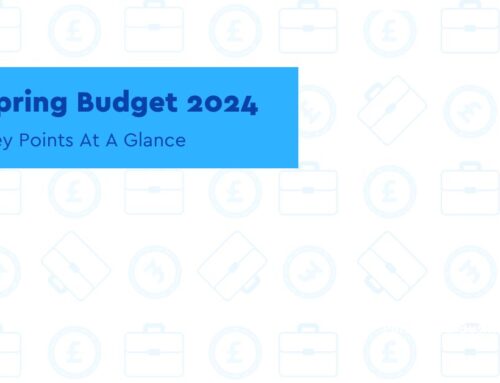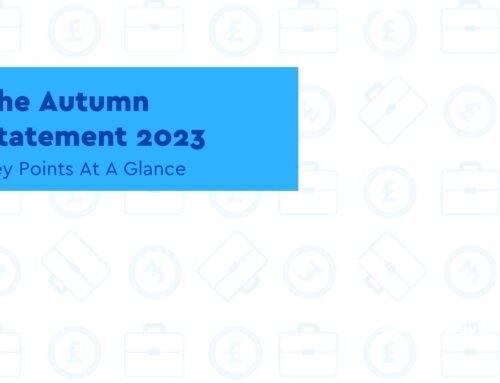Calls for cut in NICs to ease cost pressures on SMEs
Key Points
- The FSB reported two-thirds of respondents to a survey said their operating costs had risen over the past year
- FSB Chair also calls for SME Brexit Support Fund to be revamped and relaunched
A small business lobby group is urging the UK government to cut national insurance contributions to ease cost pressures on employers.
The call from The Federation of Small Businesses (FSB) came as it reported two-thirds of respondents to a survey said their operating costs had risen over the past year.
Four in ten (43%) cite inputs such as raw materials as a contributor to the rise, while labour (36%), utilities (28%) and fuel (26%) were also commonly flagged.
FSB national chairman Mike Cherry said: “Small firms are emerging from lockdowns under the strain of spiralling input and shipping costs, skills shortages, new exporting paperwork, emergency debt repayments, rent accruals and business rates.
“The Government should urgently move to mitigate cost pressures by reducing Employer NICs, which are serving as a jobs tax and yet another cost to think about in an environment where finding the right people is a nightmare.
“This Government was elected on a manifesto that rightly promised to cut the jobs tax, and Ministers must rediscover that reformist zeal if they want to unlock growth within the small business community and secure our economic recovery.
“Small businesses didn’t have a chance to make full use of the SME Brexit Support Fund before it closed.
“It should be revamped and relaunched to help our great international-facing firms access the help they need to innovate, hire and grow over the critical months ahead.”
National Insurance rates and categories
An employee’s Class 1 National Insurance is made up of contributions:
- Deducted from their pay (employee’s National Insurance)
- Paid by their employer (employer’s National Insurance)
The amounts deducted and paid depend on:
- The employee’s National Insurance category letter
- How much of the employee’s earnings falls within each band
Class 1A and Class 1B rates
Employers pay Class 1A and 1B National Insurance on expenses and benefits they give to their employees. They must also pay Class 1A on some other lump sum payments, for example redundancy payments.
The rate for the tax year 2021 to 2022 is 13.8%.
Employee National Insurance rates
This table shows how much employers deduct from employees’ pay for the 2021 to 2022 tax year.
| Category letter | £120 to £184 (£520 to £797 a month) | £184.01 to £967 (£797.01 to £4,189 a month) | Over £967 a week (£4,189 a month) |
| A | 0% | 12% | 2% |
| B | 0% | 5.85% | 2% |
| C | N/A | N/A | N/A |
| H | 0% | 12% | 2% |
| J | 0% | 2% | 2% |
| M | 0% | 12% | 2% |
| Z | 0% | 2% | 2% |
Employer National Insurance rates
This table shows how much employers pay towards employees’ National Insurance for the 2021 to 2022 tax year.
| Category letter | £120 to £170 (£520 to £737 a month) | £170.01 to £967 (737.01 to £4,189 a month) | Over £967 a week (£4,189 a month) |
| A | 0% | 13.8% | 13.8% |
| B | 0% | 13.8% | 13.8% |
| C | 0% | 13.8% | 13.8% |
| H | 0% | 0% | 13.8% |
| J | 0% | 13.8% | 13.8% |
| M | 0% | 0% | 13.8% |
| Z | 0% | 0% | 13.8% |
Contactless limit to increase to £100 from October
Key Points
- The roll out will give customers more flexibility when shopping in store
- For consumers spending more than £100, payments like Apple Pay or Google Pay do not have an upper limit
The national roll-out of the new £100 spending limit for contactless card payments will begin from 15 October 2021, UK Finance announces today.
The decision to raise the contactless limit from £45 to £100 was made by HM Treasury and the Financial Conduct Authority following a public consultation and in discussion with both the retail and banking sectors. It follows on from the successful increase in the limit from £30 to £45 in April 2020.
From 15 October 2021, consumers will start to see retailers accepting contactless payments up to the new £100 limit, which will give customers more flexibility when shopping in store.
Given the number of terminals which will need to be updated to accept the new limit, it will take some time to be introduced across all retailers. To check if a retailer has updated to the new limit, customers should either ask in store or follow the prompts on the card payment machine when paying.
For consumers spending more than £100 there are many ways to pay, for example through Chip & PIN, cash and alternatives such as mobile payments like Apple Pay or Google Pay which do not have an upper limit when authenticated through biometric technologies like fingerprint or facial recognition.
David Postings, chief executive of UK Finance, said: “Contactless payment has proved very popular with consumers and an increasing number of transactions are being made using contactless technology.
The increase in the limit to £100 will allow people to pay for higher value transactions like their weekly shop or filling up their car with fuel. The payments industry has worked hard to put in place the infrastructure to enable retailers to update their payments systems so they can start to offer their customers this new higher limit.”
The Chancellor Rishi Sunak said: “Increasing the contactless limit will make it easier than ever to pay safely and securely – whether that’s at the local shops, or your favourite pub and restaurant. As people get back to the high street, millions of payments will made be simpler, providing a welcome boost for retailers and shoppers.”
Government extends digital right to work checks to 2022
Key Points
- Physical checks were due to be reintroduced on June 21 this year
- Checks can be carried out using scans of the original documents and video call up to April 2022
Employers carrying out right to work checks will be able to continue doing them digitally until April 5, 2022 following updated government guidance.
The Home Office temporarily introduced the ability to do them digitally on March 30, 2020 following the coronavirus outbreak.
Physical checks were due to be reintroduced on June 21 this year.
The Recruitment & Employment Confederation (REC) is one of several groups which has campaigned for the 2022 extension.
Speaking to HR magazine, REC chief executive Neil Carberry said it was great news for anyone hiring in the UK right now.
“Digital right to work checks have been a resounding success during the pandemic, allowing companies to hire quickly and safely as well as improving compliance,” he said.
“It makes complete sense to extend their use, especially considering the unprecedented labour shortages we are experiencing now.”
However Dora-Olivia Vicol, CEO of the Work Rights Centre (WoRC) which seeks to help UK and EU nationals exit precarious work, is concerned that misunderstandings of the new process is locking EU citizens out of employment.
Vicol told HR magazine: “To function correctly, digital right to work checks require a level of digital literacy, hardware and connectivity which workers don’t always possess, particularly at the low-pay end of the labour market.”
WoRC research found that one in five EU nationals working in manual sectors have been unable to issue the share code needed to prove their right to work through the EU Settlement Scheme, and so a physical document check may still be preferable in some cases.
“Another major problem occurs when businesses themselves don’t take the time to understand the new process, particularly for applicants who are still awaiting status,” added Vicol.
“Since 1 July when the digital checks were introduced for people with EUSS, we have heard from several workers who were dismissed or rejected from recruitment, as a result of employers’ misunderstanding of the process.
“For this transition to digital checks to work, it’s vital that businesses take the time to familiarise themselves with the new process, and that the Home Office implements measures to ensure that digitally excluded workers are not penalised.”
On 25 August, the REC wrote a letter to the Home Office arguing that continuing digital right to work checks would help the UK solve its problems with worker shortages.
Going forward, Carberry added the REC was hopeful of working with the Home Office to create a more permanent digital solution.
Gillian McKearney, senior associate at Fieldfisher, is also hopeful that a more permanent digital solution will follow the extension.
She told HR magazine: “This [digital right to work checks] will remove the headache of obtaining manual documents at least until April 2022, at a time when many employers are still navigating the ongoing pandemic and hybrid or remote working arrangements for their workforce and we are hopeful that digital checks will become a permanent option.
“This should facilitate a smoother compliance process for HR teams as long as they do follow the correct process for remote checks in the guidance.”
Between 30 March 2020 and 5 April 2022, right to work checks can be carried out using scans of the original documents and video call.
Any checks made using this method must be recorded by the employer as ‘adjusted check undertaken on [insert date] due to COVID-19.’
Preparing for closure of the Job Retention Scheme
Key Points
- After a year and a half, and multiple iterations, the scheme is set to end on September 30, 2021
- CJRS claims for August can now be submitted and must be made by Tuesday, September 14
- The deadline to amend any claims for August is September 28
The Job Retention Scheme is the Government’s support measure for employers and businesses, covering a percentage of salary for staff who are temporarily not working in the current situation. All employers can obtain grants from HMRC.
After a year and a half, and multiple iterations and extensions, the scheme is set to end on September 30, 2021.
Submit CJRS claims for August
CJRS claims for August can now be submitted and must be made by Tuesday, September 14.
For August and September, employers can claim 60% of furloughed employees’ usual wages for the hours not worked, up to a cap of £1,875 per month. They’ll need to contribute 20% from their own funds so that furloughed employees’ are paid at least 80% of their usual wages in total for the hours they do not work (up to a cap of £2,500 a month). September will be the last month of the CJRS.
If you are an employer who has claimed for your employees, here’s what you need to do now:
- Work out how much you can claim, and the contribution you’ll need to make to reach 80% of usual wages, by searching ‘Job Retention Scheme’ on GOV.UK
- Submit any claims for August, no later than Tuesday, September 14
- Keep records supporting the grants claimed, in case HMRC need to check them
- Make sure you continue paying CJRS-related employee tax and National Insurance contributions to HMRC, and contact them if they’re struggling to pay
- Prepare for the scheme closing altogether on September 30
If you have claimed too much of the CJRS grant and have not already repaid the over claimed amount, you can repay as part of your next online claim without needing to call HMRC.
If you’ve claimed too much but do not plan to submit further claims, you can let HMRC know and make a repayment online through their card payment service or by bank transfer – go to ‘pay Coronavirus Job Retention Scheme grants back’ on GOV.UK.
Your must notify HMRC and repay the money by the latest of whichever date applies below:
- 90 days from receiving the CJRS money you’re not entitled to
- 90 days from the point circumstances changed so that you were no longer entitled to keep the CJRS grant
If you do not do this, you may have to pay interest and a penalty, as well as repaying the excess CJRS grant. Search ‘interest rates for late and early payments’ on GOV.UK.
If you have made a mistake in your claim that means you received too little money, you’ll need to amend your claim within 28 calendar days after the month the claim relates to – unless this falls on a weekend or bank holiday, where the deadline is the next weekday.
The deadline to amend claims for August is September 28, and for September, by October 28.
Weekly HMRC, Gov’t and tax updates
House prices rise in August despite end of stamp duty holiday
Average house prices increased 2.1 per cent from July to August, the second largest gain for 15 years, according to latest figures.
This compares to a month-on-month contraction between June and July of -0.6 per cent, with the increase this month described as “substantial” by Nationwide’s chief economist Robert Gardner.
Gardner said: “The bounce back in August is surprising because it seemed more likely that the tapering of stamp duty relief in England at the end of June would take some of the heat out of the market.”
Repaid VAT triggers spike in tax receipts
Tax receipts for April to July 2021 came to £226.2 billion, £76bn higher than in the same period a year earlier, data from HMRC shows.
The tax authority warned against making too many comparisons between the two periods because they were skewed by the effects of the COVID-19 pandemic.
It said the difference could mainly be explained by payments deferred and received under the VAT payment deferment policy, which were £42.1bn higher than last year.
As a result of the policy, VAT accounted for 17% of all cash brought in by taxes in the 2020/21 tax year, down from 21% in 2019/20.
Cash receipts were also higher between April and July 2021 for income tax, capital gains tax and National Insurance contributions by £22.7bn.
Receipts also increased for corporation tax (£3.8bn), hydrocarbon oils (£2.9bn) and stamp taxes (£2.2bn).
Business groups tell government: UK furlough scheme must stay for Covid-hit industries
The furlough scheme should be extended to protect workers in industries that continue to be damaged by the pandemic, business groups and unions have said as the job subsidy programme that has supported more than 11 million employees entered its final month.
Aviation industry workers and staff at Britain’s airports should be allowed to remain on furlough until next year when travel restrictions are likely to be lifted and the airline industry returns to normal, they said.
The plea comes as unions and industry lobby groups prepare for a spike in redundancies as employers, many of them struggling to cope with the impact of the Delta variant, prepare to take back staff on the coronavirus job retention scheme.
Up to 1.7 million workers were on furlough at the beginning of August and many of their jobs are expected to be in jeopardy when employers are forced to pay all their wages.
In its economic outlook due to be published next week, the British Chambers of Commerce will forecast a rise in unemployment above 5%, which is partly as a result of higher than usual redundancies linked to the end of the furlough scheme.
Earlier this month, the Bank of England said it expected the record number of vacancies to prevent a large rise in job losses and the unemployment rate would remain at 4.7%.
With only 30 days before the furlough scheme closes, employers must notify the government if they are going to make between 20 and 99 staff redundant.
Get In Touch
At Morgan Reach, we understand every business needs a little help now and again-especially when it comes to the financial side of things. Therefore, to help our clients and visitors we endeavour to cover as much of the business news as possible. If you are self-employed or run a business and need assistance and advice on how these news could make a difference to you or your business, feel free to get in touch with the experts at Morgan Reach. Our business growth experts at Morgan Reach will guide you through what support is available for you or your business as well as the latest news that may affect you.







